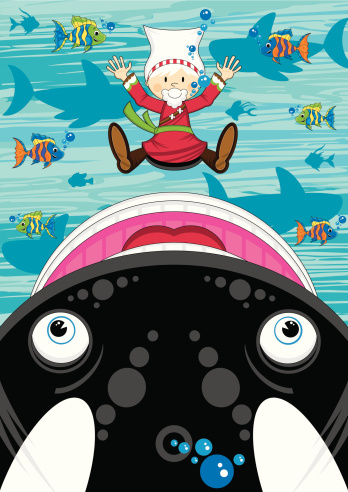托福分数测试HOT
托福课程优惠HOT
托福正价课试听0元
新托福机考练习NEW
0元讲座HOT
新版托福入门课程HOT
托福入门导学NEW
4000人报
托福机经
PDF版
TPO练习
官方授权
资料下载
826套
专业测评
40118人已测
高分经验
1193帖

扫码免费领资料
托福全科备考资料
免费水平测试及规划

扫码关注掌握一手留学资讯
回复XDF免费水平测试
托福阅读背景材料/知识之鳍如何变成有四肢的脊椎动物How fins became limbs,更多托福阅读背景材料/知识尽在新东方在线托福考试频道!

The loss of genes that guide the development of fins may help to explain how fish evolved into four-limbed vertebrates, according to a study.
In the late Devonian period, around 365 million years ago, fish-like creatures started venturing from shallow waters onto land with the help of eight-fingered limbs. The limbs had evolved from fins; during the transition, our back-boned ancestors lost rows of rigid fibers, called actinotrichia, that provide structural support and guide fin development. The number of digits was also later winnowed to a maximum of five on each limb.
Marie-Andrée Akimenko of the University of Ottawa in Canada and her colleagues may now be able to explain how our ancestors lost their fins: they have discovered a family of genes that code for the proteins that make up fins' rigid fibers. The actinodin (and) genes are present in the laboratory model zebrafish and in ancient fish, but not in four-legged vertebrates (tetrapods), the team reported June 24 in the journal Nature. What's more, the researchers found that dampening the expression of and genes in zebrafish also disrupts the expression of genes that regulate the growth of limbs and the number of digits in other animals.
These results hint that the loss of and genes is linked to the change from fins to limbs. "It's a very nice example of how changes in one or two genes can be responsible for a huge evolutionary transition," says Axel Meyer, a biologist at the University of Konstanz in Germany who studies gene evolution in fish.
But a causal connection is not certain. "The real question is: did we lose these genes because we lost the use of fins, or did we lose fins because we lost the genes?" says Denis Duboule, an evolutionary developmental biologist at the Swiss Federal Institute of Technology in Lausanne (EPFL). "The problem is that when it's an evolutionary question, you can't do the experiment."
The researchers looked for genes that were most actively expressed in zebrafish fins that were regrowing after amputation, and pinpointed two with previously unknown functions. Both genes code for proteins that make up a complex collagen-like structure called elastoidin, which is found in actinotrichia. Akimenko's team also searched the zebrafish genome database and found two additional genes that they predict produce similar proteins. The expression of all four and genes tracked the appearance of actinotrichia in the zebrafish embryo and in the regenerating fins of adults.
Databases for other bony fish also contain the genes, but they are not found in tetrapods. The gene family may have very ancient roots, as a partial and-like sequence appears in the genome of the elephant shark, which evolved 450 million years ago and is part of the oldest living family of jawed vertebrates.
The team went on to use morpholinos (small molecules that bind to RNA and prevent the manufacture of proteins) to dampen the expression of two and genes in zebrafish embryos. They found no actinotrichia in the embryonic folds that would normally give rise to fins, and the folds were underdeveloped and curled over.
When they disrupted the two genes in the regenerating fins of adults in the same way, they found that the distribution of actinotrichia was affected. Furthermore, zebrafish with reduced and expression showed abnormal expression of genes that regulate the growth of limbs and digits. When similarly abnormal in other animals, these genes can cause the growth of extra digits, like those seen in the early eight-fingered land vertebrates.
You lose some, you win some
"We tend to think that new genes bring new functions, but this study shows that the presence of genes constrains or directs development in certain directions," says Meyer. "Gene loss is actually a creative force in evolution."
The study was limited to only a few days by the short lifespan of the RNA-blocking morpholinos, so it was not possible for Akimenko to determine whether disrupting the and genes also prevents the formation of other parts of the fin skeleton that disappeared during the fin-to-limb transition.
In the future, she plans to introduce and genes into mice and observe the effects on limb development. She would also like to examine the role of the other two and genes and determine how they are regulated. The genes were not the only factor in the evolution of fins into limbs, however: "this is only one little piece of the puzzle that may help us to understand this transition," Akimenko says.

 资料下载
资料下载
2021-2025托福机经试题|答案|范文下载
发布时间:2024-02-21关注新东方在线托福
回复【XDF】获取
托福全科备考资料大礼包
发布时间:2024-02-21关注新东方在线托福
回复【XDF】获取
托福正价课试听课程包
发布时间:2024-02-21关注新东方在线托福
回复【XDF】获取
托福定制备考规划
发布时间:2024-02-21关注新东方在线托福
回复【XDF】获取
托福TPO免费模考
发布时间:2024-02-21关注新东方在线托福
回复【XDF】获取
托福免费水平测试
发布时间:2024-02-21关注新东方在线托福
回复【XDF】获取
托福写作新题型模拟题+范文汇总[ETS发布]
发布时间:2023-07-30关注新东方在线托福
回复【XDF】获取
2023全年托福机经PDF版下载
发布时间:2023-06-17关注新东方在线托福
回复【XDF】获取
2022全年托福机经PDF版下载
发布时间:2023-06-17关注新东方在线托福
回复【XDF】获取
2022全年写作托福机经整理
发布时间:2023-01-13关注新东方在线托福
回复【XDF】获取
2022年托福考后题目回忆
发布时间:2023-01-13关注新东方在线托福
回复【XDF】获取
托福口语黄金80题附录音
发布时间:2023-01-13关注新东方在线托福
回复【XDF】获取
新东方IBT写作网络课堂录音[.rar]
发布时间:2023-01-13关注新东方在线托福
回复【XDF】获取
21天托福听力提升计划
发布时间:2023-01-13关注新东方在线托福
回复【XDF】获取
不怕跑题偏题,这份写作资料请收好
发布时间:2023-01-13关注新东方在线托福
回复【XDF】获取
托福阅读提分技巧锦囊妙计
发布时间:2023-01-13关注新东方在线托福
回复【XDF】获取
口语拖后腿?因为你缺少这套万能句式资料
发布时间:2019-11-01关注新东方在线托福
回复【XDF】获取
攻破托福听力难关的资料包
发布时间:2023-01-13关注新东方在线托福
回复【XDF】获取
看剧学英语,经典美剧一键获取
发布时间:2019-11-01关注新东方在线托福
回复【XDF】获取
原版外刊资源合集|精心打包整理
发布时间:2019-11-01关注新东方在线托福
回复【XDF】获取

关注新东方在线托福,
回复【XDF】获取大礼包

 推荐阅读
推荐阅读
回答:分数进入瓶颈期,我想你可以这么做。1、提高自己的分析总结能力,题目做完之后仔细分析错误原因,归纳错题,看看是不是哪个类型的题目容易出错。2、建立自查自纠能力
来源 : 新东方在线 2020-08-18 16:13:07 关键字 :
回答:不可以的,want to do是固定搭配不能变,后面的to cook是表目的,所以都不可以用doing的形式替代。
来源 : 新东方在线 2020-08-18 16:01:48 关键字 :
如果我写作写了一个人aperson,后面想说他的努力,后面用什么代词指代呢,是his?her?ones?hisorher?回答:你可以写hisorher。
来源 : 新东方在线 2020-08-18 15:54:24 关键字 :
回答:是的。morphlogical是形态学,生态学是ecology。你好,Morpheus是古希腊梦神睡神的名字。
来源 : 新东方在线 2020-08-18 15:51:16 关键字 :
回答:独立写作,建议350、400,不超过450,综合写作250左右。
来源 : 新东方在线 2020-08-18 15:46:51 关键字 :



 资料下载
资料下载
关注新东方在线托福
回复【XDF】获取
关注新东方在线托福
回复【XDF】获取
关注新东方在线托福
回复【XDF】获取
关注新东方在线托福
回复【XDF】获取
关注新东方在线托福
回复【XDF】获取
关注新东方在线托福
回复【XDF】获取
关注新东方在线托福
回复【XDF】获取
关注新东方在线托福
回复【XDF】获取
关注新东方在线托福
回复【XDF】获取
关注新东方在线托福
回复【XDF】获取
关注新东方在线托福
回复【XDF】获取
关注新东方在线托福
回复【XDF】获取
关注新东方在线托福
回复【XDF】获取
关注新东方在线托福
回复【XDF】获取
关注新东方在线托福
回复【XDF】获取
关注新东方在线托福
回复【XDF】获取
关注新东方在线托福
回复【XDF】获取
关注新东方在线托福
回复【XDF】获取
关注新东方在线托福
回复【XDF】获取
关注新东方在线托福
回复【XDF】获取

 阅读排行榜
阅读排行榜
 相关内容
相关内容